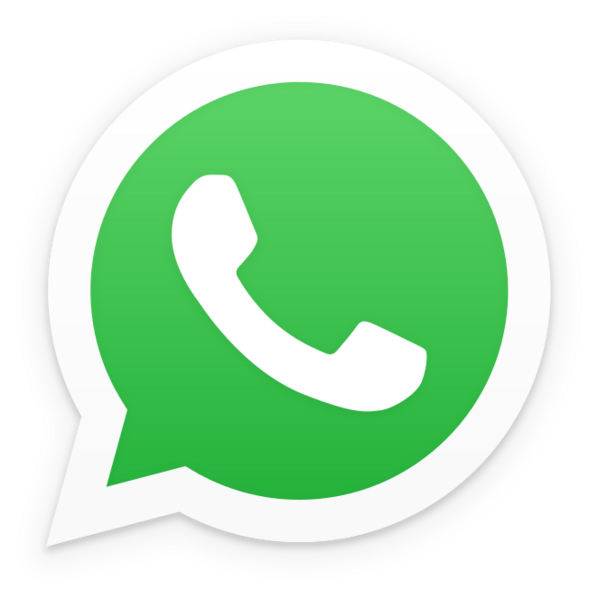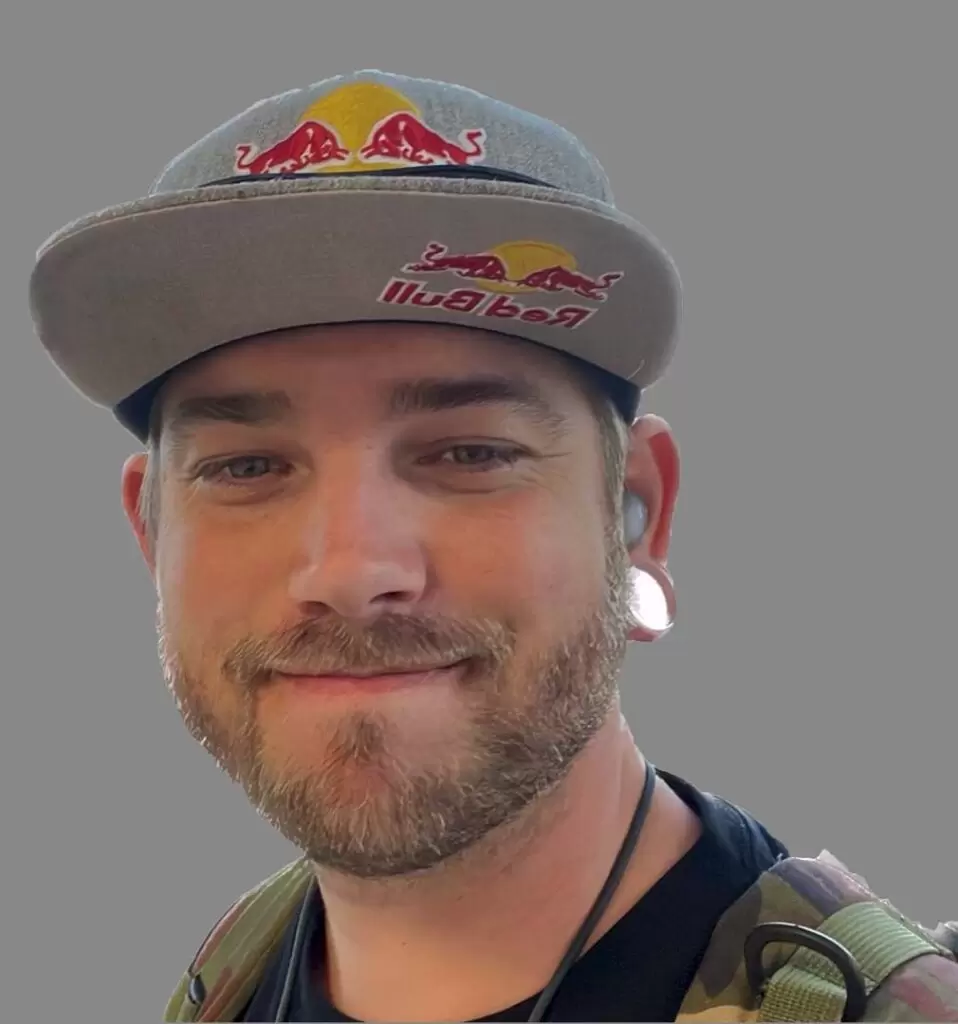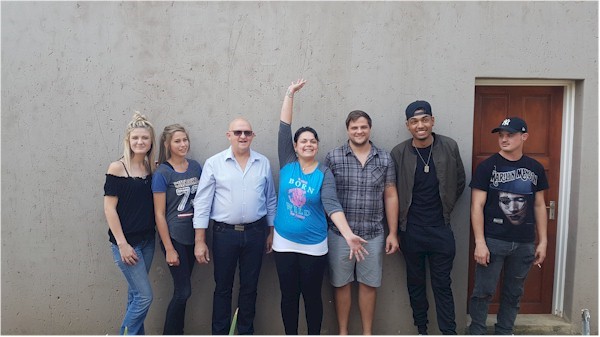Skinart Training United Kingdom
Tattoo, piercing and PMU Training in London, United Kingdom

 Chat to us on WhatsApp
Chat to us on WhatsApp
Visit our Tattoo, piercing and PMU Training Website for More Details
The Skinart Training Team

Zane

Sasha

Gillian

Tristan

Samantha

Janet

Gary
Discover comprehensive tattoo training courses in United Kingdom, a country known for its artistic flair and cultural significance of tattoos.
In this article about, tattoo training in united kingdom | your pathway to excellence.
Go to >>> Skinart Training Website
For more information on our Tattoo, Permanent makeup, Body piercing, removal, Microblading, Scalp microdot pigmentation, Microshading, Microneedling and Paramedical coures.
The Tattoo Industry: A Global Tapestry of Art and Expression
The tattoo industry, once a niche and oft-misunderstood sector, has burgeoned into a global phenomenon that bridges cultures, generations, and social classes. With roots that trace back thousands of years, tattooing today transcends its traditional markers, embracing both age-old traditions and modern innovations. The global appeal of tattoos tells a story of humanity’s shared desire for self-expression and the indelible mark of art on our collective consciousness.
Historical Context
Historically, tattooing has been practiced across various civilizations, each with its distinct cultural and symbolic meanings. From the intricate tribal designs of the Maori in New Zealand and Polynesians to the ancient Egyptians who inked their bodies as a form of protection, tattoos have always held significance. In Japan, the art of irezumi or traditional hand-poked tattooing, once associated with the Yakuza (organized crime syndicates), is a meticulous process that can take years to complete, with designs rich in symbolism and history.
However, it wasn't until the 20th century, particularly after World War II, that the western world began to recognize tattooing as a legitimate art form. Pioneers like Sailor Jerry and Don Ed Hardy elevated the craft, integrating both eastern and western styles, setting the stage for the modern tattoo renaissance.
Modern Evolution and Expansion
Today's tattoo industry is a fusion of styles, techniques, and cultures. The rise of global media, especially social media platforms like Instagram, has democratized access to tattoo artistry. Artists from Moscow to Melbourne showcase their portfolios online, drawing clientele from all corners of the world. This easy access to diverse styles has led to a heightened appreciation of the craft and a blurring of regional tattooing styles.
Tattoo conventions, once a rarity, are now major events globally. These conventions serve as melting pots for artists to exchange techniques, styles, and stories, propelling the industry forward. As of the early 2020s, there are over 20,000 tattoo parlors in the U.S. alone, and the industry is estimated to be worth over $1 billion.
Cultural Shifts and Acceptance
One of the most profound changes in the global tattoo landscape is the shift in societal perceptions. Tattoos, once synonymous with rebels and outsiders in many societies, have found acceptance in mainstream culture. Celebrities, athletes, and influencers now wear their ink with pride, making a statement about their journey, beliefs, or experiences.
Despite the broader acceptance, cultural sensitivities remain. What's seen as artistic in one culture might be perceived as appropriation in another. The Maori moko or the sacred tribal tattoos of various indigenous tribes are rich with ancestral significance. For outsiders to wear these designs without understanding or respect can be deeply offensive. It underscores the importance of education and cultural sensitivity in the industry.
Technological and Artistic Innovations
The tools and techniques of tattooing have undergone a significant evolution. While traditional methods like tebori in Japan or stick and poke continue, modern tattoo machines offer precision and reduced pain. Innovations like rotary machines, better quality inks, and advancements in aftercare products have enhanced both the tattooing experience and the longevity of the tattoos themselves.
Moreover, the boundaries of what's possible with tattoo art have expanded. Hyper-realistic tattoos, 3D tattoos, and even UV ink tattoos that glow under black light are pushing the envelope of creativity.
Challenges and the Path Forward
Like any industry experiencing rapid growth, the tattoo world faces challenges. Regulation discrepancies across countries can lead to health risks if parlors aren't held to high standards. There's also a pressing need for the industry to address issues like the sustainability of inks and waste generated during the tattooing process.
As the industry continues to grow, it will also need to grapple with issues of authenticity and commercialization. The balance between maintaining the sanctity of ancient traditions while embracing modern innovations will be pivotal.
Conclusion
The global tattoo industry stands at an intriguing crossroads of tradition and innovation. From its deep-rooted cultural beginnings to its current status as a billion-dollar industry, tattooing mirrors the human desire for self-expression and identity. As it evolves, it's essential to preserve the heart of the craft, honoring its rich history while being open to the possibilities of the future.
The Body Piercing Industry: A Global Perspective on Tradition and Modernity
Across the annals of human history, the practice of body piercing has been a poignant symbol of cultural, religious, aesthetic, and individualistic expression. Today, the global body piercing industry is a dynamic tapestry of age-old traditions mingling with modern trends, reflecting humanity's enduring quest to redefine personal and cultural identities. As the world becomes more interconnected, the body piercing industry stands as a testament to the synthesis of global traditions and the transformative power of individual expression.
Historical Backdrop
Body piercing, akin to tattooing, has deep-seated roots across various civilizations. Ancient Egyptians revered the art, with nose and ear piercings seen among the elite. The Bible makes references to earrings as symbols of status. In many tribal societies, piercings, particularly lip and ear expansions, played pivotal roles in rituals and were markers of adulthood or tribal status.
For instance, in parts of Africa and the Amazon, lip plates or lip plugs symbolize a rite of passage. Similarly, septum piercings have been customary among warrior classes in certain tribal societies. Despite these rich traditions, body piercings, particularly beyond the conventional earlobes, were largely taboo in Western societies until the latter half of the 20th century.
Revival and Modern Flourishing
The late 20th century saw a resurgence of body piercings in Western cultures. Influenced by the punk rock movement and later the alternative and grunge scenes of the 1980s and 1990s, piercings became synonymous with counter-culture, rebellion, and individualism. This modern revival gave birth to a thriving industry, with piercing parlors sprouting in urban centers worldwide.
Today, the body piercing industry is diverse, with numerous types of piercings available, from the conventional earlobe and nostril piercings to the more adventurous dermal anchors and genital piercings. This diversity is not only in terms of piercing types but also in the variety of jewelry materials, designs, and craftsmanship.
Globalization and Cross-cultural Influences
The rise of digital media and global travel has significantly influenced the body piercing industry. Just as K-Pop has taken the world by storm, so too have Korean-inspired minimalist ear piercings. Western celebrities sporting nose rings or septum jewelry have rekindled interest in these piercings in places where they were once considered traditional.
However, as with tattoos, there's a fine line between appreciation and appropriation. It's essential to approach body piercings with an understanding and respect for their cultural origins. For instance, while nose piercings might be a fashion statement in one culture, they might have bridal or religious significance in another.
Innovations and Safety Standards
The global body piercing industry, now more than ever, emphasizes safety and innovation. Newer, hypoallergenic materials like titanium and surgical steel have become standard for initial piercings, reducing the risk of allergic reactions and infections. The industry has also seen advancements in piercing techniques and aftercare products.
However, challenges persist. Regulatory standards can vary significantly from one country to another, leading to disparities in piercing safety protocols. The onus often lies with the consumer to ensure they're getting pierced at a reputable establishment with high hygiene standards.
Economic Footprint and Challenges
As of the early 2020s, the global body piercing market is burgeoning, bolstered by a younger generation that views piercings as a less permanent alternative to tattoos for self-expression. The industry has also profited from the rise of e-commerce, with countless online retailers offering a plethora of jewelry options.
Yet, challenges abound. As with any rapidly growing industry, the body piercing realm grapples with issues of commercialization and authenticity. The balance between catering to modern trends while respecting traditional practices is delicate.
Conclusion
The global body piercing industry is an exhilarating blend of the past and the present. It underscores humanity's timeless desire to adorn and redefine our physical vessels. In an age of fleeting digital impressions, body piercings offer a tangible testament to our individual and collective journeys.
As the industry continues to evolve, its stakeholders—piercers, jewelry designers, and consumers—must approach it with a blend of innovation, safety, and cultural reverence. Only then can this ancient practice continue to resonate meaningfully in our modern world.
The Permanent Makeup Industry: A Global Examination of Beauty and Endurance
Permanent makeup, also known as cosmetic tattooing or micropigmentation, is a technique that has surged in popularity in recent decades. However, its origins are as ancient as the desire to enhance one's features. Across the globe, the permanent makeup industry offers both an artistic expression of beauty standards and a solution to practical concerns. As its influence expands, so does its synthesis of cultural beauty ideals, technological advancements, and business prowess.
Historical Foundations
The practice of enhancing facial features using permanent means is not new. Ancient Egyptian artifacts and mummies, for example, show evidence of cosmetic tattooing techniques used to accentuate the eyes and lips. Similar practices have been discovered in ancient cultures from Asia to South America, often symbolizing status, beauty, or tribal affiliations.
Despite these ancient roots, the modern revival of permanent makeup as a mainstream beauty solution began in the late 20th century. It was initially promoted as a convenience for women who wanted to reduce daily makeup application time and costs. However, its utility extended beyond mere convenience, offering solutions for those with hair loss, scarring, or medical conditions affecting skin pigmentation.
Modern Innovations and Techniques
Today, the global permanent makeup industry encompasses a range of procedures, from microblading for fuller eyebrows to lip blushing for more vibrant lips. The techniques have evolved, with newer methods offering more natural and refined results compared to the bolder applications of yesteryears.
Technological advancements have also made strides in the industry. Pigment formulations have improved in quality, ensuring longevity and reduced chances of discoloration. Devices have become more precise, allowing for intricate details that mimic natural hair strokes or lip textures.
Cultural Influences and Trends
The global nature of beauty trends, propelled by social media platforms like Instagram and TikTok, has had a notable impact on the permanent makeup industry. For instance, the trend of fuller, well-defined eyebrows, popularized by celebrities and influencers, gave rise to the microblading phenomenon.
However, cultural interpretations of beauty remain diverse. In parts of Asia, for instance, permanent eyeliner or lip tinting may be pursued to achieve a softer, more youthful look, reflecting regional beauty standards. In the West, permanent makeup might be sought for bolder, more defined features.
This fusion of global trends and local preferences presents both opportunities and challenges for permanent makeup artists. They must tailor their skills to cater to a diverse clientele while staying updated on global best practices.
Safety, Training, and Regulation
The permanent nature of these cosmetic procedures means that safety and expertise are paramount. Regulations surrounding permanent makeup vary from country to country. Some nations require rigorous training and certification, while in others, the industry remains less regulated.
As the demand for permanent makeup services grows, there's an increasing need for standardized training and safety protocols. Associations like the Society of Permanent Cosmetic Professionals (SPCP) in the U.S. have set guidelines and offer certifications, aiming to ensure that practitioners meet certain standards.
However, with varied global standards, consumers must exercise diligence. Researching practitioners' credentials, reviews, and portfolios becomes crucial to ensure a safe and satisfactory outcome.
Economic Impact and Future Growth
With its rising popularity, the permanent makeup industry has seen significant economic growth. As of the early 2020s, the market has expanded to accommodate training institutes, specialized equipment manufacturers, and dedicated studios.
The potential for growth remains vast. As techniques become more refined and the results more natural-looking, a broader demographic is likely to consider these services. Additionally, the convenience of reduced daily makeup application, combined with the long-term cost savings of not purchasing certain cosmetic products, makes it an appealing choice for many.
Yet, challenges loom. The industry must grapple with issues of over-commercialization and ensuring that practitioners prioritize client well-being over quick profits. Additionally, as with any beauty trend, shifts in preferences can influence demand. Staying adaptive and client-focused will be pivotal for sustained success.
Conclusion
The global permanent makeup industry stands at the intersection of ancient practices and modern desires. It speaks to humanity's age-old wish to enhance beauty and the modern need for convenience and practicality. As the industry evolves, it will undoubtedly reflect the changing landscape of global beauty standards, technological advancements, and consumer preferences.
For those considering delving into its offerings or pursuing a career within its folds, the journey promises a blend of artistry, innovation, and the timeless allure of enduring beauty.

Explore the Top Benefits of Online tattoo, piercing and PMU Training!
* Anywhere Access: Learn from any location! This mode of training is especially beneficial for those residing in remote areas or those with travel constraints.
* Comfortable Learning Environments: Study in your comfort zone, leading to better concentration and enriched learning experiences.
* Opportunities for Deep Dives: Take extra time to explore complex concepts or areas of interest deeply.
* Accommodating Different Learning Styles: Online courses can adapt better to various learning preferences, such as visual, auditory, or kinesthetic.
* Reduced Learning Time: The focus and pace of online learning can cut down the overall time it takes to complete a course.
Skinart Training in London
Many student wonder if they need a qualification or need to be very artistic to do but you can become a skilled technician and bacome an important member of your community in London with no previous experience
What skills do I need to do
1) A cordial demeanor
2) Sharp eyesight
3) Consistent precision
4) Aptitude for graphic reproductio
 Afghanistan
Afghanistan Åland Islands
Åland Islands Albania
Albania Algeria
Algeria American Samoa
American Samoa Andorra
Andorra Angola
Angola Anguilla
Anguilla Antarctica
Antarctica Antigua And Barbuda
Antigua And Barbuda Argentina
Argentina Armenia
Armenia Aruba
Aruba Australia
Australia Austria
Austria Azerbaijan
Azerbaijan Bahamas
Bahamas Bahrain
Bahrain Bangladesh
Bangladesh Barbados
Barbados Belarus
Belarus Belgium
Belgium Belize
Belize Benin
Benin Bermuda
Bermuda Bhutan
Bhutan Bolivia
Bolivia Bonaire
Bonaire Bosnia And Herzegovina
Bosnia And Herzegovina Botswana
Botswana Bouvet Island
Bouvet Island Brazil
Brazil British Indian Ocean Territory
British Indian Ocean Territory Brunei Darussalam
Brunei Darussalam Bulgaria
Bulgaria Burkina Faso
Burkina Faso Burundi
Burundi Cambodia
Cambodia Cameroon
Cameroon Canada
Canada Cape Verde
Cape Verde Cayman Islands
Cayman Islands Central African Republic
Central African Republic Chad
Chad Chile
Chile China
China Christmas Island
Christmas Island Cocos (keeling) Islands
Cocos (keeling) Islands Colombia
Colombia Comoros
Comoros Congo
Congo The Democratic Republic Of The Congo
The Democratic Republic Of The Congo Cook Islands
Cook Islands Costa Rica
Costa Rica Côte D'ivoire
Côte D'ivoire Croatia
Croatia Cuba
Cuba Curaçao
Curaçao Cyprus
Cyprus Czech Republic
Czech Republic Denmark
Denmark Djibouti
Djibouti Dominica
Dominica Dominican Republic
Dominican Republic Ecuador
Ecuador Egypt
Egypt El Salvador
El Salvador Equatorial Guinea
Equatorial Guinea Eritrea
Eritrea Estonia
Estonia Ethiopia
Ethiopia Falkland Islands (malvinas)
Falkland Islands (malvinas) Faroe Islands
Faroe Islands Fiji
Fiji Finland
Finland France
France French Guiana
French Guiana French Polynesia
French Polynesia French Southern Territories
French Southern Territories Gabon
Gabon Gambia
Gambia Georgia
Georgia Germany
Germany Ghana
Ghana Gibraltar
Gibraltar Greece
Greece Greenland
Greenland Grenada
Grenada Guadeloupe
Guadeloupe Guam
Guam Guatemala
Guatemala Guernsey
Guernsey Guinea
Guinea Guinea-bissau
Guinea-bissau Guyana
Guyana Haiti
Haiti Heard Island And Mcdonald Islands
Heard Island And Mcdonald Islands Holy See (vatican City State)
Holy See (vatican City State) Honduras
Honduras Hong Kong
Hong Kong Hungary
Hungary Iceland
Iceland India
India Indonesia
Indonesia Islamic Republic Of Iran
Islamic Republic Of Iran Iraq
Iraq Ireland
Ireland Isle Of Man
Isle Of Man Israel
Israel Italy
Italy Jamaica
Jamaica Japan
Japan Jersey
Jersey Jordan
Jordan Kazakhstan
Kazakhstan Kenya
Kenya Kiribati
Kiribati Democratic People's Republic Of Korea
Democratic People's Republic Of Korea Republic Of Korea
Republic Of Korea Kuwait
Kuwait Kyrgyzstan
Kyrgyzstan Lao People's Democratic Republic
Lao People's Democratic Republic Latvia
Latvia Lebanon
Lebanon Lesotho
Lesotho Liberia
Liberia Libya
Libya Liechtenstein
Liechtenstein Lithuania
Lithuania Luxembourg
Luxembourg Macao
Macao Macedonia
Macedonia Madagascar
Madagascar Malawi
Malawi Malaysia
Malaysia Maldives
Maldives Mali
Mali Malta
Malta Marshall Islands
Marshall Islands Martinique
Martinique Mauritania
Mauritania Mauritius
Mauritius Mayotte
Mayotte Mexico
Mexico Federated States Of Micronesia
Federated States Of Micronesia Republic Of Moldova
Republic Of Moldova Monaco
Monaco Mongolia
Mongolia Montenegro
Montenegro Montserrat
Montserrat Morocco
Morocco Mozambique
Mozambique Myanmar
Myanmar Namibia
Namibia Nauru
Nauru Nepal
Nepal Netherlands
Netherlands New Caledonia
New Caledonia New Zealand
New Zealand Nicaragua
Nicaragua Niger
Niger Nigeria
Nigeria Niue
Niue Norfolk Island
Norfolk Island Northern Mariana Islands
Northern Mariana Islands Norway
Norway Oman
Oman Pakistan
Pakistan Palau
Palau Palestine
Palestine Panama
Panama Papua New Guinea
Papua New Guinea Paraguay
Paraguay Peru
Peru Philippines
Philippines Pitcairn
Pitcairn Poland
Poland Portugal
Portugal Puerto Rico
Puerto Rico Qatar
Qatar Réunion
Réunion Romania
Romania Russian Federation
Russian Federation Rwanda
Rwanda Saint Barthélemy
Saint Barthélemy Saint Helena Ascension And Tristan Da Cunha
Saint Helena Ascension And Tristan Da Cunha Saint Kitts And Nevis
Saint Kitts And Nevis Saint Lucia
Saint Lucia Saint Martin (french Part)
Saint Martin (french Part) Saint Pierre And Miquelon
Saint Pierre And Miquelon Saint Vincent And The Grenadines
Saint Vincent And The Grenadines Samoa
Samoa San Marino
San Marino Sao Tome And Principe
Sao Tome And Principe Saudi Arabia
Saudi Arabia Senegal
Senegal Serbia
Serbia Seychelles
Seychelles Sierra Leone
Sierra Leone Singapore
Singapore Sint Maarten (dutch Part)
Sint Maarten (dutch Part) Slovakia
Slovakia Slovenia
Slovenia Solomon Islands
Solomon Islands Somalia
Somalia South Africa
South Africa South Georgia And The South Sandwich Islands
South Georgia And The South Sandwich Islands South Sudan
South Sudan Spain
Spain Sri Lanka
Sri Lanka Sudan
Sudan Suriname
Suriname Svalbard And Jan Mayen
Svalbard And Jan Mayen Swaziland
Swaziland Sweden
Sweden Switzerland
Switzerland Syrian Arab Republic
Syrian Arab Republic Taiwan
Taiwan Tajikistan
Tajikistan Tanzania
Tanzania Thailand
Thailand Timor-leste
Timor-leste Togo
Togo Tokelau
Tokelau Tonga
Tonga Trinidad And Tobago
Trinidad And Tobago Tunisia
Tunisia Turkey
Turkey Turkmenistan
Turkmenistan Turks And Caicos Islands
Turks And Caicos Islands Tuvalu
Tuvalu Uganda
Uganda Ukraine
Ukraine United Arab Emirates
United Arab Emirates United Kingdom
United Kingdom United States
United States United States Minor Outlying Islands
United States Minor Outlying Islands Uruguay
Uruguay Uzbekistan
Uzbekistan Vanuatu
Vanuatu Venezuela
Venezuela Viet Nam
Viet Nam British Virgin Islands
British Virgin Islands Us Virgin Islands
Us Virgin Islands Wallis And Futuna
Wallis And Futuna Western Sahara
Western Sahara Yemen
Yemen Zambia
Zambia Zimbabwe
ZimbabweSkinart Aesthetic Services in London
Business oppertunity in London
Within the aesthetic industry is the most obvious one - opening a tattoo studio in London. As tattoos have become increasingly mainstream, the demand for high-quality, professional tattoo services continues to rise. Entrepreneurs who are either skilled tattoo artists themselves or are capable of hiring experienced tattoo artists can create a successful local business by opening a tattoo studio. The success of such a venture can be amplified by creating a comfortable and inviting atmosphere and providing excellent customer service.
This business opportunity involves opening a specialized body piercing studio in London. These studios are dedicated spaces where customers can get a variety of body piercings performed by professional piercers. With a rising interest in body modifications and self-expression, the demand for these studios is increasing. Investing in a clean, welcoming environment, state-of-the-art equipment, and highly trained professionals can set your business apart.
A primary business opportunity lies in setting up a microblading studio in London. Microblading has become a highly sought-after service within the beauty industry due to its semi-permanent nature and realistic results. Entrepreneurs with expertise in this area, or those capable of hiring skilled technicians, can create a thriving business by offering professional microblading services in a comfortable and sanitary environment.
A primary business opportunity lies in setting up a microblading studio in London. Microblading has become a highly sought-after service within the beauty industry due to its semi-permanent nature and realistic results. Entrepreneurs with expertise in this area, or those capable of hiring skilled technicians, can create a thriving business by offering professional microblading services in a comfortable and sanitary environment.
This business opportunity in the permanent makeup industry involves opening a permanent makeup clinic or studio in London. This venture primarily focuses on providing services such as microblading, eyeliner tattooing, lip blushing, and more. With the rising popularity of these services, entrepreneurs with the right skill set, or the ability to hire trained professionals, can successfully tap into this market. Offering a comfortable, safe, and professional environment for clients is crucial to stand out.
Tattoo removal services are an important sector within the tattoo industry. Unfortunately, not all tattoos end up as desired or stay relevant to the bearer. As a result, many people seek out services to have their tattoos removed or faded for a cover-up. Laser tattoo removal has become the go-to process for these customers, and starting a business specializing in this service could be highly profitable.
Remember, every business venture requires thorough market research and a solid business plan to succeed. It's essential to identify the local demand, competition, and potential challenges before jumping into a business opportunity.
Find a training center near me
Choose a letter below that your town starts with ?
A | B | C | D | E | F | G | H | I | J | K | L | M | N | O | P | Q | R | S | T | U | V | W | X | Y | Z |Contact Us
Are you ambitious, curious, and ready to learn? We are excited to welcome you to our stimulating course, designed to challenge you and ignite your passion for learning. This course promises a comprehensive exploration of key concepts, providing you with valuable insights and hands-on experience. By joining us, you'll be stepping into a vibrant community of learners who, like you, are eager to make the most of this incredible opportunity. Don't wait! Enroll today and start your journey towards academic excellence.
Every entrepreneurial journey starts with a daring decision: the choice to step away from safety and venture into the unknown. While the thought of leaving your comfort zone can be daunting, the rewards of entrepreneurship can be immense. You'll have the chance to shape your own destiny, innovate, and make a real impact in your chosen field. The journey of entrepreneurship is not easy, but it's one filled with opportunities for personal growth, freedom, and fulfillment. So, take the leap, trust in your capabilities, and embark on this exciting journey.
It's time to invest in yourself and your future. Join our course and gain the skills and knowledge that can set you apart. Click here to enroll now and start your journey to success!